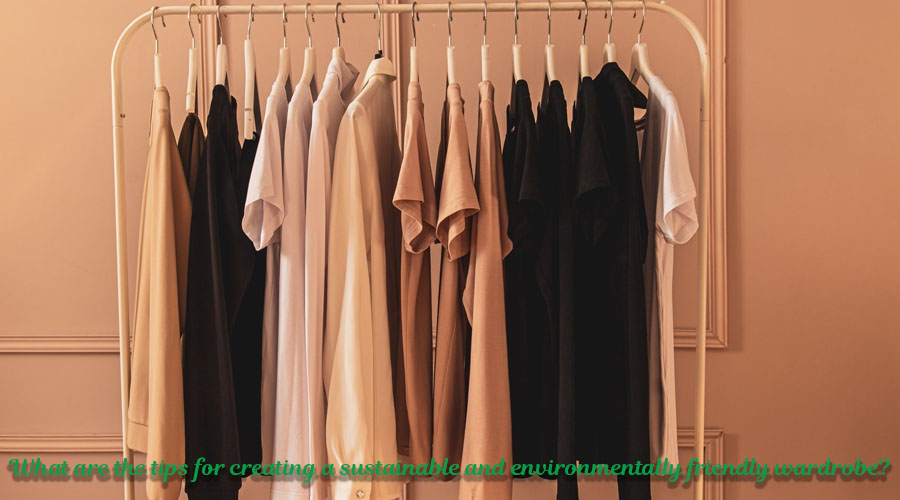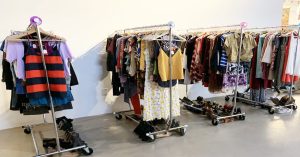
What are the tips for creating a sustainable and environmentally friendly wardrobe?
What are the tips for creating a sustainable and environmentally friendly wardrobe?
Introduction
Fashion is one of the largest industries in the world, but it also has a significant impact on the environment. Fast fashion is a major contributor to pollution and waste, and it’s important to be conscious of the choices we make when building our wardrobes. By making small changes, we can create a sustainable and environmentally friendly wardrobe that not only benefits the planet, but also supports ethical and responsible practices in the fashion industry.
In this blog post, we’ll explore some tips for creating a sustainable and environmentally friendly wardrobe. From researching and planning to investing in high-quality, sustainable brands and shopping second-hand and vintage, we’ll cover it all.

Research and Planning
Understand the Impact of Fast Fashion
Fast fashion is a term used to describe the fast-paced production and consumption of clothing. Brands release new collections at a rapid pace and consumers are encouraged to constantly update their wardrobes to keep up with the latest trends. This model of production and consumption is not only bad for the environment, but it also often relies on unethical and inhumane practices, such as poor working conditions and low wages for factory workers.
To create a sustainable and environmentally friendly wardrobe, it’s important to understand the impact of fast fashion and make a conscious effort to reduce your involvement in this system.
Know Your Personal Style and Needs
When building a sustainable wardrobe, it’s important to start with a solid understanding of your personal style and needs. Take stock of the items you wear most often and the pieces you feel most comfortable in. By focusing on your personal style and needs, you’ll be able to create a wardrobe that is both sustainable and reflective of your personal aesthetic.
Set Realistic Goals
Creating a sustainable wardrobe is a journey, and it’s important to set realistic goals for yourself. Start small and focus on making small changes that will have a big impact. Whether it’s investing in one sustainable piece per month or reducing the amount of fast fashion you purchase, every small step counts.
Invest in High-Quality, Sustainable Brands
Definition of Sustainable Brands
Sustainable brands are companies that focus on ethical and responsible practices, from the way their products are made to the way they treat their workers. These brands prioritize the environment and often use sustainable materials and processes to reduce their impact on the planet.
Invest in High-Quality, Sustainable Brands
Definition of Sustainable Brands
Sustainable brands are companies that prioritize environmental and social responsibility in their business practices. These companies aim to reduce their impact on the environment, support fair labor practices, and create products that are designed to last.
Why Investing in High-Quality, Sustainable Brands is Important for the Environment
Investing in sustainable brands is important because it helps to shift the demand towards more environmentally friendly products. This, in turn, will encourage more companies to adopt sustainable practices. When you buy from sustainable brands, you’re not just investing in a piece of clothing, you’re investing in a better future for the planet. Sustainable brands also often use environmentally friendly materials and production methods, reducing the carbon footprint of the clothing industry.

Shop Second-Hand and Vintage
Benefits of Buying Second-Hand Clothing
Buying second-hand clothing is an excellent way to reduce waste and support a more sustainable wardrobe. When you purchase second-hand clothing, you’re giving existing items a new life, which is better for the environment than buying new items. Additionally, second-hand clothing is often less expensive than new clothing, making it a cost-effective way to build a sustainable wardrobe.
Where to Find Second-Hand and Vintage Clothing
There are many places to find second-hand and vintage clothing, including thrift stores, consignment shops, online marketplaces, and garage sales. Many communities also host clothing swaps, where individuals can bring gently used items to trade with others.
Tips for Shopping Second-Hand and Vintage Clothing
When shopping for second-hand and vintage clothing, it’s essential to take the time to find items that are of high quality and in good condition. Here are some tips to help you get started: Set aside plenty of time to look for items. Know your size and the types of items that you’re looking for. Inspect items carefully before purchasing to ensure that they’re in good condition. Try on clothing to make sure it fits well and is comfortable. Be willing to get creative and think outside of the box when it comes to finding unique pieces.
Mindful Consumption and Maintenance
Importance of Reducing the Amount of Clothing You Buy
Reducing the amount of clothing you buy is crucial in building a sustainable wardrobe. This means being mindful of the items you add to your closet and only purchasing what you need. Overconsumption is one of the leading drivers of environmental degradation, so by reducing your consumption, you can make a significant impact on the planet.
Maintenance Tips to Extend the Life of Your Clothes
Proper maintenance is key to extending the life of your clothes. Here are some tips to help you care for your clothing: Read care labels and follow the instructions for washing and drying. Avoid using harsh detergents and chemicals. Use a clothesline or drying rack instead of a dryer. Store clothing properly to prevent damage. Mend and repair items as needed.
How to Properly Dispose of Clothing When it Reaches the End of its Life
When clothing reaches the end of its life, it’s essential to dispose of it properly. Here are some tips to help you properly dispose of clothing: Donate clothing that is still in good condition to a local thrift store or clothing swap. Consider repurposing old clothing into something new. Recycle clothing that can’t be donated or repurposed. Avoid throwing clothing in the trash as it will likely end up in a landfill and contribute to environmental degradation.
Conclusion
A. Summary of the Tips Discussed in the Blog Post
In this blog post, we discussed the tips for creating a sustainable and environmentally friendly wardrobe. We covered the importance of buying high-quality, sustainable brands, shopping second-hand and vintage, and being mindful of your consumption and maintenance habits. By following these tips, you can make a positive impact on the environment and build a wardrobe that is both stylish and sustainable.
Final Thoughts and Encouragement for Creating a Sustainable and Environmentally Friendly Wardrobe
Building a sustainable and environmentally friendly wardrobe is a process that takes time and effort, but it’s worth it. By making small changes to the way you shop and care for your clothing, you can have a significant impact on the planet. So don’t be afraid to start small and make changes as you go. Every little bit helps!
Call to Action for Readers to Make Small Changes in Their Wardrobes for a Big Impact on the Environment
We encourage all readers to take the steps necessary to create a sustainable and environmentally friendly wardrobe. Whether it’s shopping second-hand, investing in sustainable brands, or being mindful of your consumption and maintenance habits, every small change you make can have a big impact on the environment. So take the first step today and start building a wardrobe that is good for you and the planet!








